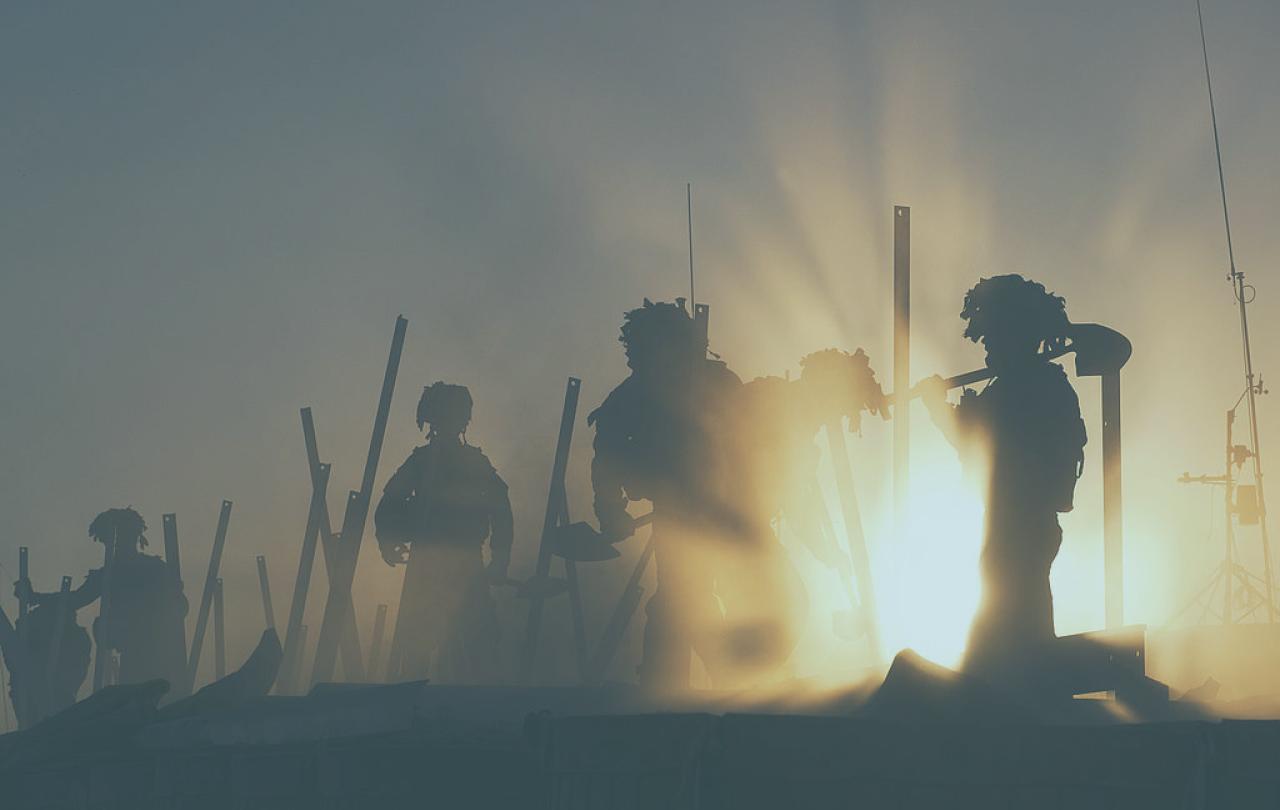
The car bomb went off at 0630, rudely awakening me from a deep sleep. The noise, big and bassy, was followed by silence, followed by the wailing of the camp attack alarm. I felt a range of emotions in those moments, but definitely present was a sense of relief. “So that’s what it sounds like…”. I had been in Kabul for two or three months by that point, and had always been slightly on edge whenever I walked between buildings, knowing that an explosion was inevitable at some point, but not knowing how loud it would really be. Afghanistan was my first operational tour – it was 2014 and the British presence in country was shrinking rapidly, and my reward for a good performance on my intelligence officer’s course was assignment to a unit deploying to the Afghan capital. It might seem a strange reward, but it was sincerely meant, and gratefully received.
Why does a soldier go to war? You could ask a thousand men and women in the armed forces and get a thousand different answers. The most straightforward (and superficial) answer is “Because I was ordered to”, but delve below the surface and you find all manner of motivations and justifications. All I can offer you is why I think I wanted to join the British Army and fight (there are reasons that are probably hidden even to me) and how as Christian I make sense of war.
I joined the Army at a time when what were known as Blair's Wars were stuttering to an unsatisfactory conclusion. We had withdrawn from Iraq, leaving behind a broken country and unwittingly paving the way for Islamic State, and soldiers were still fighting and dying in Helmand Province, Afghanistan. While I was going through the selection process for the Royal Military Academy Sandhurst there were a plethora of war documentaries on television that had been filmed using helmet cameras, giving an unprecedented first-person view of conflict. A normal person might have watched those programmes and thought they wanted no part on it whatsoever. I saw them and wanted in. Why?
What appealed to me most was the responsibility; of deploying to a dangerous place with your fellow soldiers and doing everything in your power to keep them alive.
I look back and think there were all sorts of reasons floating round my head. There was undoubtedly a slightly boyish sense of adventure – it seemed like most of my peers at university were off to be bankers, lawyers or management consultants, and I wanted to do something a bit less grey. There was a desire to challenge myself too – a worthier reason, but still not the full story. What appealed to me most was the responsibility; of deploying to a dangerous place with your fellow soldiers and doing everything in your power to keep them alive and to complete your mission. I saw soldiering as less a job than a calling.
Throughout my career much has changed but that sense of responsibility is still there. It is at the heart of how I understand being a Christian in conflict zones, my personal ‘theology of war’, if you like. When I came home from Afghanistan, I was asked by a friend whether I had killed anyone. I said I hadn’t. He then asked if I thought I could bring myself to do so should the situation arise. I said that I hoped so, because I had been on armed sentry duty multiple times and so was the only person standing between my colleagues and the enemy. If I had identified a suicide bomber but decided not to shoot in that moment, then I would have been betraying the responsibility I had to my friends. Indeed, I doubt that any suicide bomber would have thought worse of me had I shot him – he would have recognised that I had my job to do, just as he had his.
Who is anyone to judge between us, and who am I to claim the morality of what I do for a living?
Of course, this line of thinking is problematic. If I am just doing my job and the suicide bomber is doing his, then in moral terms we are surely are only as good, or as bad, as each other. His God calls him to do his duty and look after his brothers and sisters, and so does mine, and we are therefore equally right or equally wrong. Who is anyone to judge between us, and who am I to claim the morality of what I do for a living?
And yet sincerely holding a belief does not make you right. The failings of moral relativism are well-documented, yet too often we act as the sort of people who treat Pilate’s question “What is truth?” as a viable philosophical position rather than as the moral evasion that it is. We in the West are jaded by complex and bloody counterinsurgencies with no clear end state, affirming Bart Simpson’s dictum that “There are no good wars, with the following exceptions: the American Revolution, World War II, and the Star Wars Trilogy”. But the conflict in Ukraine has shown that binary wars between an obvious aggressor and a nation defending their homeland are not merely history, and that today people can still take up arms for justifiable reason.
I'm a Christian so I am a pacifist in the sense that peace is vastly preferable to war, and I have seen first-hand the suffering and misery it causes. Yet as a Christian too I cannot affirm peace at all costs when it means that rights and lives of innocent people can be callously disregarded by an oppressor who can only be resisted by force. I look at pictures of bombed-out apartment blocks in Ukraine, of kidnapped schoolgirls in Nigeria, of civilians murdered in Afghanistan and cannot affirm anything less than this, that there are things in this world worth fighting for.
I would reflect too that both my calling as a soldier and my faith have given me a sense of the value of life not as something not to be clung too at all costs, but as a gift to be made the most of. One of the things we did in our first week of Sandhurst was to make a will. There I was, fresh out of university, deciding who should inherit my meagre possessions (I didn’t even have a car), and asking the bloke next to me, who I’d only met 24 hours ago, to witness my signature. To be honest, it didn’t really feel real. What felt much more real was posing for a photo in the unit sports hall two years later, arms crossed, Union Jack and regimental flag behind me, knowing that it was the photo that would be used in the newspapers if I was blown up in Afghanistan.
You see that mutual love in tight-knit units where one soldier is prepared to die for another.
When you’re forced to confront the fact that you might die, you start to realise what it is that you are living for. I believe in the sacredness of life as a God-given gift, which makes the idea of sacrifice which lies at the heart of the Christian faith all the more powerful. “Greater love has no one than this” Jesus says in John’s Gospel, "to lay down one’s life for one’s friends”, and you see that mutual love in tight-knit units where one soldier is prepared to die for another. I think it’s that idea of living and possibly dying for something or someone more than just me is what keeps in the Army, when many of those who made their wills in that room at Sandhurst have left for civilian jobs.
Which brings me back to my initial reflection, that there are myriad different reasons why people join the armed forces and go to war. My Christian faith is at the heart of my reason(s), but I'm realistic to know that many of my colleagues do not share that faith and so would have a different motivation (though perhaps not quite as different as one might think). We all have stories to tell about why things matter to us, and matter to us so much that we think they are worth fighting for, in whatever guise 'fighting' takes. You have heard my story. What’s yours?





